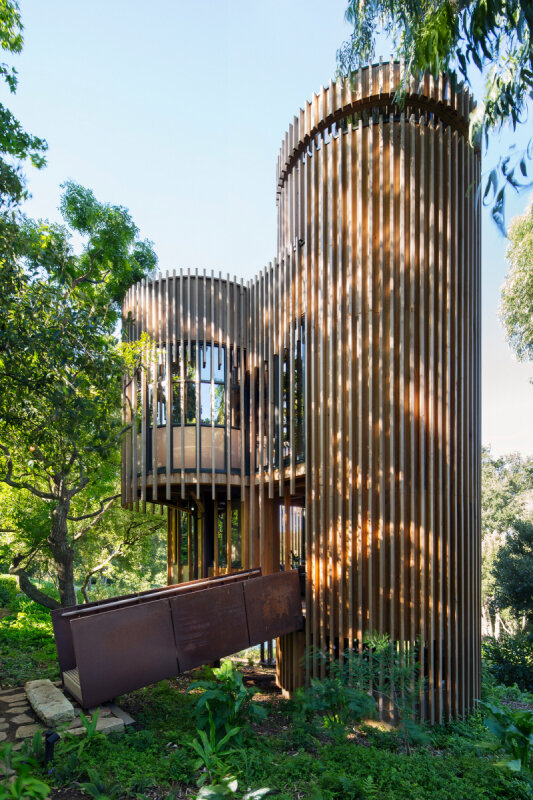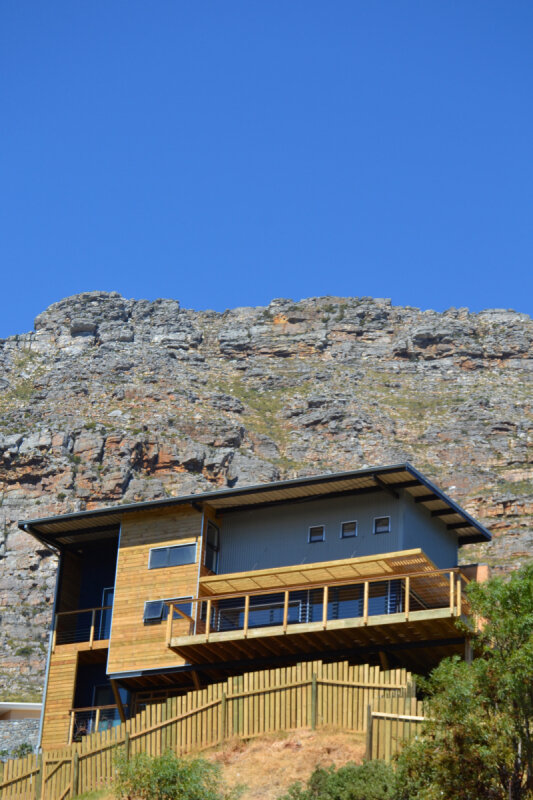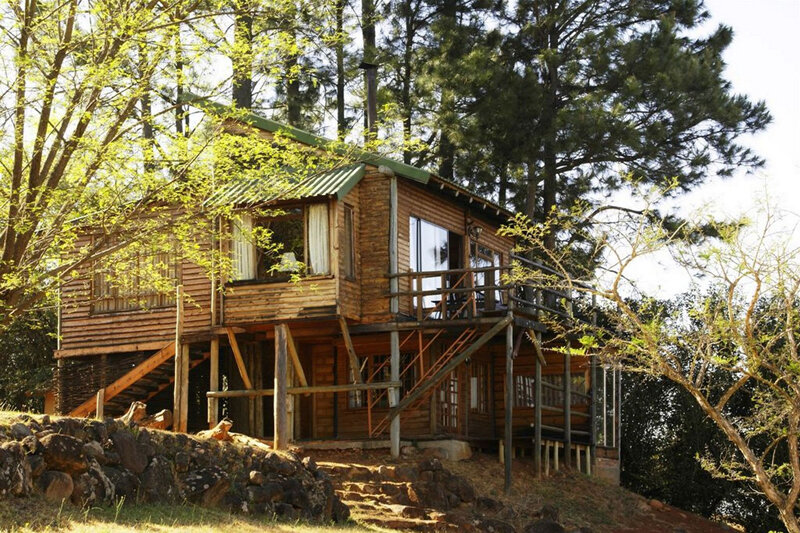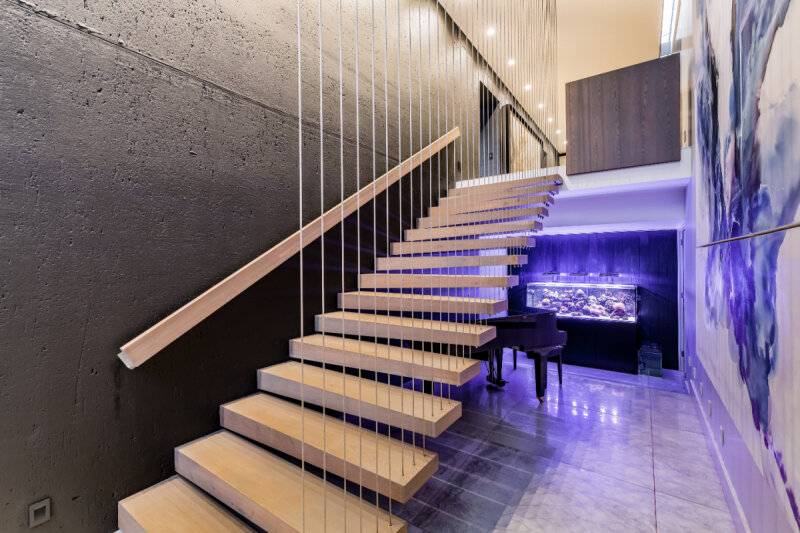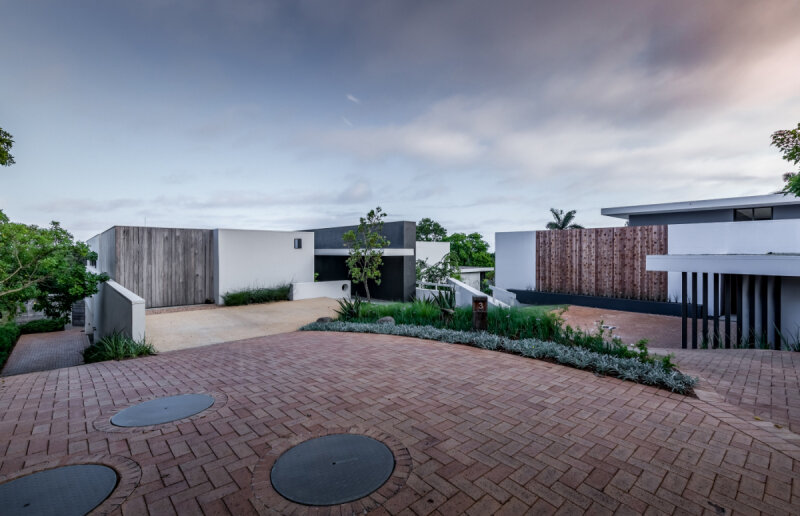6 SOUTH AFRICAN ARCHITECTS WHO HAVE DONE WONDERS WITH WOOD
Timber is an interesting, yet unforgiving medium that has a unique appeal in modern architecture. We are seeing the use of wood in a number of South Africa’s exciting architectural projects – be it for cladding, staircases, roofing structures or even entire tree houses.
“The versatility of timber can be seen from small slats for roll up blinds, to larger slats as sunscreen and cladding, to large planks for sliding garage doors and beams for the support of roofs - it serves a structural and aesthetic function. It is so versatile and malleable,” says architect Kevin Lloyd.
And while wood helps to deliver a unique appeal to even the most ambitious of designs, it is challenging and complicated to work with. However, a few architects and builders have risen to the challenge, harnessing wood to create masterpieces that are worth noting.
Let’s take a look at just 6 of those gorgeous projects:
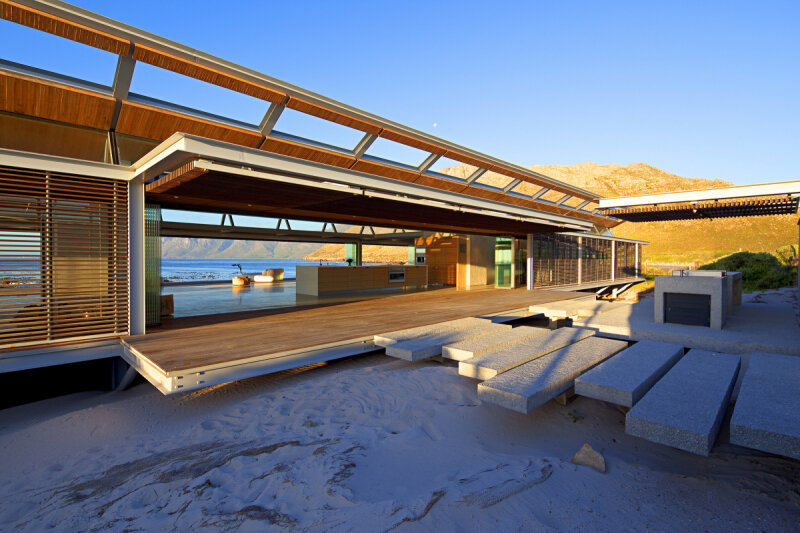

This extraordinary Rooiels Beach House features panoramic views across the Atlantic Ocean and it is these views that the clients wanted to capitalise on when signing on Elphick Proome Architecture to design them a wooden house by the sea. While appearing to be made entirely of wood, this extraordinary building is actually a minimal steel framed glass box with a hull shaped hardwood clad roof. All the external walls are frameless sliding folding glass doors and are filtered by slatted hardwood security shutters which open hydraulically to become verandas. To ensure minimum environmental intrusion to the sensitive fynbos vegetation and dunes that form the site, the house is elevated. The steel, glass and raw concrete of the structure is all juxtaposed by the warm hardwoods which are deployed in the ceilings, furniture and all joinery to deliver an extraordinary outcome. All interior walls dividing living and sleeping spaces are sliding ash clad doors which slide away during daytime hours to create a single large living space which flows out on all four edges on to broad cantilevered decks made of Garapa hardwood. Wood is also favoured here in its extensive creation of warmth within the home’s minimalist interior spaces and its harsh, surrounding coastal environment with non-exotic hardwoods used throughout to ensure sustainability.
Designed by Malan Vorster Architecture Interior Design, this tree house in Constantia features a unique pin-wheel layout. This cabin-like hideaway is constructed vertically to mimic the trees which surround it and to capitalise on the views, which only get better the higher you go. The tree house features a living space on the first level, followed by a large bedroom suite on level two and finally a roof deck on the upper most level. Below the tree house structure itself, at ground level, is a plant room. In order to minimise the impact on the environment, this unique timber structure is suspended on timber poles and reached via a steel ramp. The whole structure, both inside and out, sees a juxtaposition of steel, to wood, to glass to brass – with each element being hand crafted to create a world that is totally unique to this particular building.
Sitting on a really steep site in Lakeside, Cape Town, House Jouissance presented a challenge to architectural designer, Jacques Cronje. Keeping the footprint as small as possible to leave as much of the relatively level area of the site open for garden space, was one of the brief’s stipulated by the client. As a result, the house was then conceived as a series of staggered levels cascading down the site - each connected to the next by half a flight of stairs. Varying volumes contributed to a spatial quality. To minimise disruption and attachment points to the site, a steel portal frame structure was used as steel allows for larger spaces and therefore less support posts. And while timber frame walls provided a great look, a rammed earth wall was also incorporated into the design to provide a high mass element within the lightweight structure for better distribution of heat and cold. Thus, ultimately wood was used in combination with other materials, each serving a unique purpose for the house.
When owner-builder Chris Hearne looked at the space on which he envisaged a unique guest accommodation option, he saw the possibility of constructing a tree house within a corpse of mature pine trees, if he cut down one tree. However, cutting down a tree that had taken years to grow seemed to defeat the purpose and thus he decided to keep the tree and build round it. And thus Bahati Tree Lodge was born. Rather than anchor the structure to the trees, the tree lodge was built on a platform some four metres off the ground by digging holes and pouring a 20/30 plug of concrete into the hole onto which the main timber poles rested - thus allowing for critical movement when the wind blows. These timber poles were connected together by bolting more wooden poles horizontally to create a platform which then formed the floor and base for the rest of the structure. Originally built as a romantic getaway for just two people, Chris’ tree lodge became so popular with holidaymakers to the Drakensberg that he also built in part of the space underneath the main structure, allowing for a second bedroom able to sleep families of four.
Centrally located in Menlo Park, Pretoria, this house which was built in 1949 at a time when Pretoria was simply farmlands and fields. The client sought to renovate the house while preserving the farm reference of the property; however the original house was cold and dark with small windows, only one bathroom and a small living space. Thus it was decided by architect Nadine Engelbrecht, to transform the house using open-plan spaces that focussed on the lush garden and added additional light and warmth into the space. Large glass doors open the living space entirely onto the garden. Slate paving and steel framed windows compliment the traditional methods of construction, and a round free-standing swimming pool mimics a farm dam. Wood was brought into the house via a thermo treated pine pergola, Balau decking and engineered oak floors in the interior. This softened the palette of the house, bringing warmth into the structure.
This property by Kevin Lloyd Architects is not built in entirely of wood, but uses wood in a number of design elements. One such element is the Iroko planking that was used vertically to clad the external walls. This timber was left to go naturally silver grey – the perfect complement to the smooth plaster and light grey painted walls. In addition, through the clever use of wood panelling, the team were able to conceal a hydraulic hinged garage door as well as a double swing door with concealed locking device. The same wood was then also used as a large vertical plank for the front door handle. Inside the structure, white washed natural oak was used for the stair treads, with an aeroplane propeller tread shape, with steel brackets and tensioned stainless steel cable tying the look together, creating yet another juxtaposition of materials. Veneered oak, stained natural brown, worked as wall panelling inside with two hinged doors hidden in the panel to present a clean smooth natural textured timber look in the entrance. The hinging and framing required in House 5167 required preciseness, flexibility and workability of timber to achieve such an effect.
Here at R&B Timber Group we love seeing timber being used more creatively in the building industry and commend those architects that are willing to step out of their comfort zone to create homes that inspire, provide warmth, and ultimate comfort anyone who steps inside their treated timber frames. For any of your needs sourcing treated timber poles or wooden poles, please do not hesitate to get in touch with R&B Timber Group.


